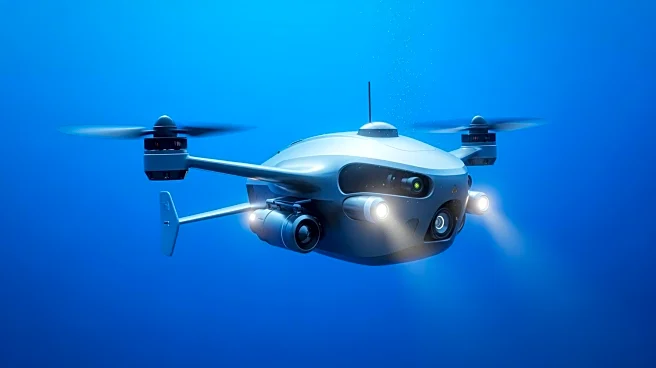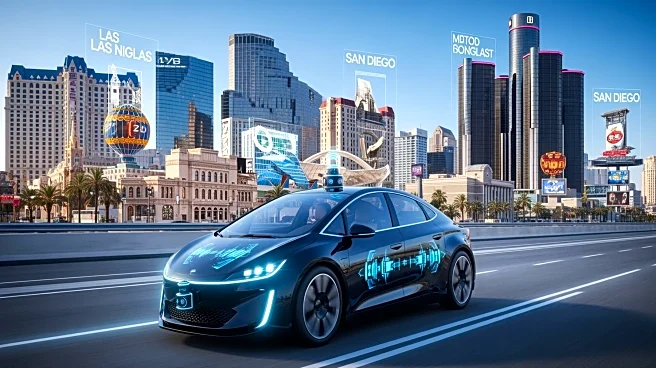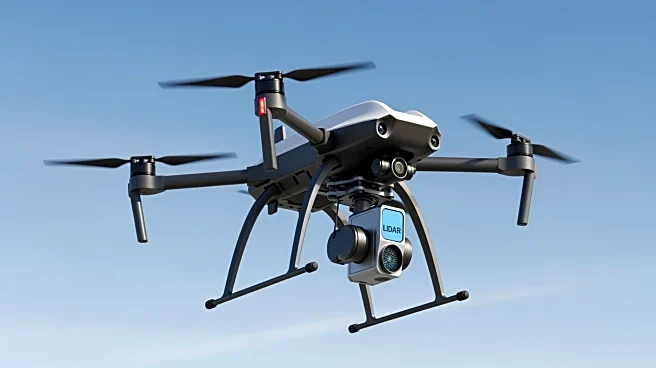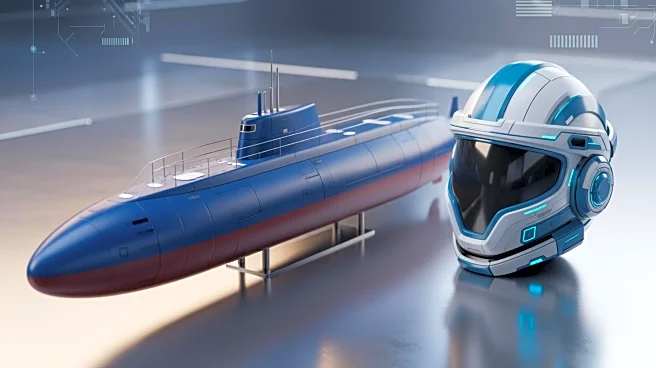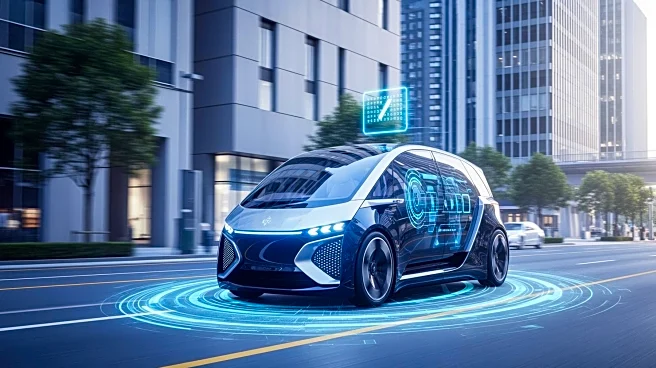What's Happening?
Dynautics has introduced the Phantom 2, a modular Unmanned Underwater Vehicle (UUV) designed to improve subsea operational capabilities. Building on the success of its predecessor, the Phantom 1, which was developed for the US Navy, the Phantom 2 features
enhanced reliability and efficiency. The vehicle's design incorporates 3D models, digital twin creation, and simulation to minimize risk and cost. The modular architecture allows for different battery options, increasing endurance and range, and can accommodate various payloads. Initial tests demonstrated the Phantom 2's ability to operate at shallow depths with a cruising speed of 4 knots and an endurance of 12 hours. The design is rated for depths up to 100 meters, providing access to littoral areas and much of the continental shelf. The UUV successfully completed repeated missions without interim recovery, validating its modular design and communication systems.
Why It's Important?
The launch of the Phantom 2 represents a significant advancement in unmanned subsea technology, offering a versatile platform for commercial, scientific, and security applications. UUVs like the Phantom 2 provide a low-impact, cost-effective solution that supports the decarbonization of offshore and subsea tasks. They are crucial for sectors such as scientific research, environmental monitoring, military and defense operations, and commercial industries like oil and gas exploration and aquaculture. The enhanced capabilities of the Phantom 2, including its modular design and extended endurance, position it as a valuable tool for sustainable subsea exploration, potentially reducing operational costs and environmental impact.
What's Next?
The next phase of testing for the Phantom 2 involves integrating a side scan sonar, which will further expand its operational capabilities. This integration is expected to enhance the vehicle's ability to conduct detailed subsea surveys and mapping, making it more attractive for commercial and scientific applications. As Dynautics continues to develop and refine the Phantom 2, it aims to extend the capabilities of its modular and reliable AUVs to support a sustainable future for subsea exploration. The ongoing development and testing will likely attract interest from various industries seeking efficient and environmentally friendly solutions for underwater operations.
Beyond the Headlines
The development of the Phantom 2 highlights the growing importance of unmanned systems in addressing environmental and operational challenges in subsea exploration. The use of UUVs can significantly reduce the carbon footprint associated with traditional underwater operations, aligning with global efforts to combat climate change. Additionally, the modular design of the Phantom 2 allows for adaptability and customization, catering to specific industry needs and promoting innovation in subsea technology. As the demand for sustainable and efficient underwater solutions increases, the Phantom 2 could play a pivotal role in shaping the future of subsea exploration and operations.
